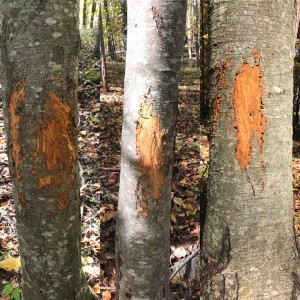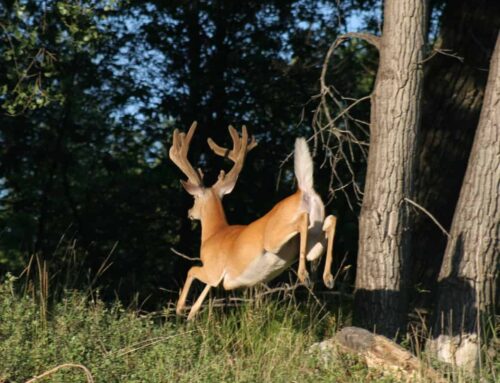 Spring gobbler season gives me a good excuse to pull on the camouflage again and hit the woods. If I call in and shoot a 22-pounder with a long beard and spurs like box cutters, fantastic. But just as importantly I am out there looking for buck sign that I missed on my hunting properties six months ago.
Spring gobbler season gives me a good excuse to pull on the camouflage again and hit the woods. If I call in and shoot a 22-pounder with a long beard and spurs like box cutters, fantastic. But just as importantly I am out there looking for buck sign that I missed on my hunting properties six months ago.
April and May are good months to start scouting for next deer season, which, by the way, is only about 7 short months away. Amid listening for gobbles and hiking to the birds, here are the two main things I look for in the woods.
Trails
When you scout one of your best spots for deer in September or October, you sneak around and don’t cover much ground because you want to be low-impact and not spook deer. Well now, don’t worry about that. The good turkey hunter is aggressive and covers a lot of ground. That is how he or she finds plenty of big birds–and plenty of still-visible trails that deer used last fall.
Many days when the woods are silent of turkey thunder, I cut a main trail and follow it…and walk and walk and walk until I find out where it goes. Along the way, that trail will inevitably fork off into secondary trails that link food sources and cover thickets. I walk those too because I know many does and bucks, the habitual critters they are, will walk on those paths again next fall.
I used to carry a map and a Sharpie and draw my routes from points A to B. Now, I drop pins on a land app. Along a trail, I note secluded feeding areas that I might have missed last year—maybe a grove of white oaks on a ridge point or a half-acre honeysuckle thicket on the edge of a swamp. When the trail cuts a creek crossing, bends around a sink hole, veers through a fence gap, etc. I mark those bottlenecks on my map. They are good spots for stands next fall.
Think about it. When you find a deer trail in October, you think you know where it comes from or ends up, but your theory is abstract. But when you walk a trail from end to end in the spring you know where it goes, plus you locate killer spots for stands. Imagine how much that will help your planning for buck season 2020.
Rubs
One day last spring, I was sitting and calling to a thundering tom. A flash caught my eye 100 yards out. The gobbler? I carefully raised my binocular. Nah, it was just the sun hitting an antler-rubbed pine tree about 8 inches in diameter. I kept glassing and picked up four more big rubs.
 I put a lot of stock in sign-post rubs. How did I miss those last November? Anyhow, with the turkey still gobbling and coming closer, I made a mental note of that section of rubbed ridge, which was some segment of a good buck’s core area. He might be back next fall, or another buck would move in and set up shop there.
I put a lot of stock in sign-post rubs. How did I miss those last November? Anyhow, with the turkey still gobbling and coming closer, I made a mental note of that section of rubbed ridge, which was some segment of a good buck’s core area. He might be back next fall, or another buck would move in and set up shop there.
Also, as you walk on trails, look for clusters of five, 10 or more old rubs. You’ll often find them, along with scrapes, at the intersection of two or more trails. The clusters indicate spots where bucks frequently came to check the paths for hoe does last November and December. You should plan to watch those high-traffic rub junctions during the rut this fall.
By the way, I didn’t get that turkey I was calling to on the rubbed-up ridge, but at least I did go home with more fresh deer info that might help me shoot a 10-pointer in 6 or 7 months.





